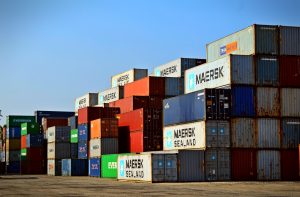
What are the post-covid supply chain trends that will remain after we finally unlock? This is a question of great interest to me as we reach the 23rd of March 2021, the anniversary of the UK’s first lockdown. You might remember, like me, how the Supply Chain was one of the first things to be noticeably affected when the handbrake was applied twelve months ago. But, why was this, and what can we learn from this for the future?
At the beginning, most people, even myself, began to follow the stockpiling mindset and let us get extra of everything “just-in-case”, because at that time, we were entering a period of uncertainty of not knowing how long it would last and fear of possible rationing like the war years may be reintroduced. The stockpiling mindset was reflected through huge abnormal and spikes for lots of different products all over the country and many parts of the world. In the UK, many retailers were unable to redeploy surplus stock from region to region as they had done in the past, because every region was in high demand. During the early days of the pandemic, we found the most products were available somewhere in the supply chain, it was just a simple case they could not keep up with this unprecedented, constant, and continuous demand by the customer.
What happened in the pandemic to the global supply chain?

During the early days of the pandemic, we saw huge redeployment of skills going into meeting supply. Remember when highly skilled pilots became couriers for the health, food, and general supply chain logistics; this was critical at the time when the UK’s final stage distribution was falling over. The once reliable Global Pharmaceutical supply chains from China and India to Europe found themselves unable to meet demand and was forced into rationing. The long-stretched and previously deemed secure supply chains from Asia to Europe had become unreliable and imbalanced. Even now for some products it is the same today because of the shortage in shipping containers, which again causes inflation in product prices.
The pre-covid globalised supply chain had been optimised for the low lead times and the low prices. In the short term, the customer will have to accept the hidden cost of single-source supply chain dependency linked with limited agility and flexibility whilst coping with the immediate demand, and there are limited options for significant change whist global supply chains remain imbalanced. However, there will be opportunities for short term gains with high inflated prices if the lead time in more in line with customer ambitions. These areas will be key drivers for change in supply chain restructuring in the post covid-era.
What are the Changes are on the Horizon for supply chains?
A key area of change is sustainability of the supply chain through regionalisation, these regional distribution hubs reduce the distances and reliability of currently stretched supply chains to single sources. While this change is already a work-in-progress because of the labour cost increasing in China, and cost starting to match the West, perhaps the reason for the slow progress in this area is because of the breaking up of the vast supplier network that has been built up within these Chinese hubs.
However, to create more reliable, agile, and sustainable supply chains this needs to be expedited in the post-covid era. Adapting and improving this model through the regionalisation of distribution hubs in the UK, is potentially where SMEs could gain from this move as we move into the post-covid era. This approach is being used for the UK Covid mass vaccination programme through regional Hubs.
Supply chains are becoming more transparent and humanised
As businesses look to refresh their operations after the crisis, current innovations in sustainability can link, to shape more resilient supply chains through a stronger focus on continuous improvement, transparency, and shared responsibility. Transparency through data sharing may be seen as problematic, this is often overcome with supply chain finance programmes utilising blockchain and is normally used for Tier 1 suppliers, enhancing sustainability with supply chains could be extended for other Tiered suppliers further up the supply chain.
Also, the humanisation aspect will almost certainly play a core role in the rebalancing of the global supply chains. More visibility is being given to people within the supply chain structure as they make key decision, because as we have seen the in the pandemic, big, unexpected, fast-changing and a continually changing and unclear environment can make statistical modelling problematic. This means, we may see more of the Toyota Principle of “autonomation”, with approximately 80% automation and 20% opportunity for human knowledge and expertise intervening to improve the supply chain. Subsequently, frameworks for capturing, developing, and integrating this human knowledge to help create a sustainable supply chain could be an area for future research as we enter the post-covid era of the new ‘look’ supply chain.
What are your predictions for post-covid supply chain trends?
There are lots of changes that will come into effect as we unlock, but I would really like to hear what you think about the future of the supply chain in a post pandemic world. So, get in touch and let me know. You can drop me an email, or leave a comment below, and if you have enjoyed this article, feel free to share this post on social media.